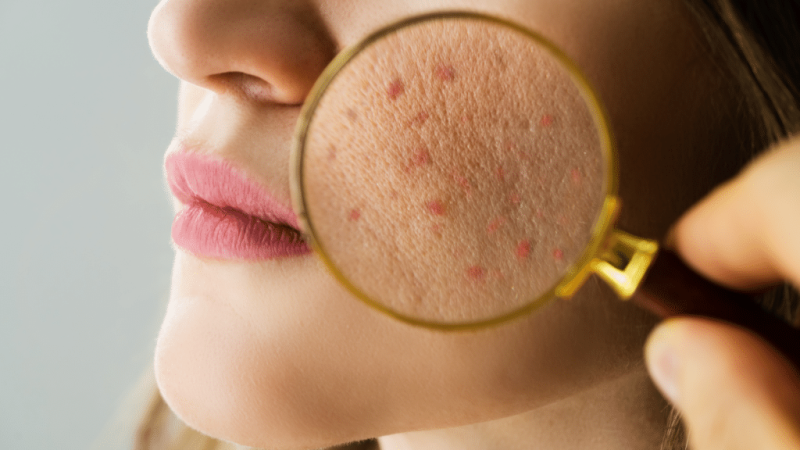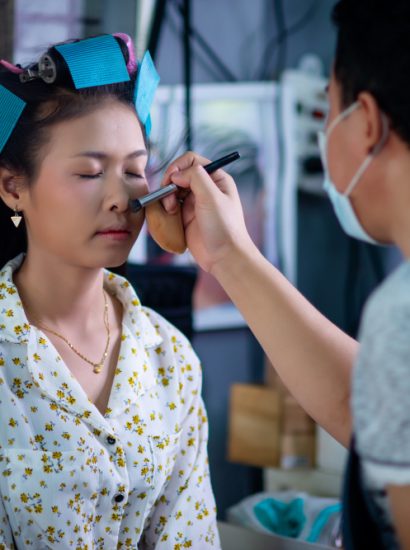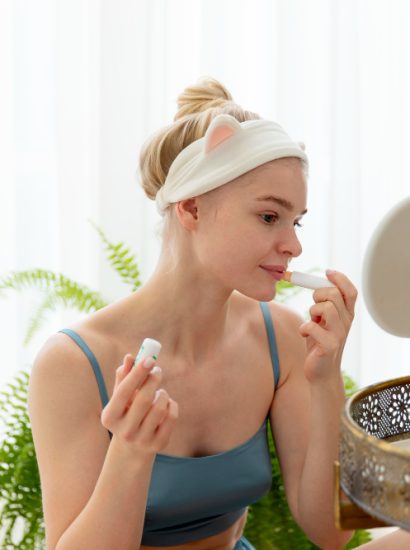In the world of skincare, ingredients like retinol, vitamin C, and hyaluronic acid often take center stage. But there’s a quiet performer that deserves just as much recognition—azelaic acid. Often overlooked, this multifunctional ingredient offers an impressive range of skin benefits, from fighting acne and fading dark spots to soothing rosacea and calming inflammation.
If you’ve never heard of azelaic acid or aren’t quite sure what it does, this guide will walk you through what it is, how it works, and why it might be the missing link in your skincare routine.
What Is Azelaic Acid?
Azelaic acid is a naturally occurring dicarboxylic acid found in grains like barley, wheat, and rye. In skincare, it’s synthesized for stability and used in topical treatments to address a variety of skin issues.
Azelaic acid is best known for its
- Antibacterial and anti-inflammatory properties
- Melanin-inhibiting action for brightening
- Gentle exfoliation that clears pores without irritation
Unlike many active ingredients, azelaic acid is non-irritating and safe for all skin types, making it particularly effective for those with sensitive or reactive skin.
How Azelaic Acid Works on Your Skin
Azelaic acid is a multitasking powerhouse that functions in several key ways:
a. Antibacterial Action
Azelaic acid kills Propionibacterium acnes (P. acnes)—the bacteria responsible for acne—helping to reduce breakouts and prevent new ones from forming.
b. Anti-inflammatory Support
It calms skin inflammation, which is particularly useful for rosacea, acne-prone skin, and conditions involving redness or irritation.
c. Tyrosinase Inhibition
Azelaic acid blocks the enzyme tyrosinase, which is involved in melanin production. This helps fade post-inflammatory hyperpigmentation (PIH), melasma, and dark spots.
d. Mild Exfoliation
It gently promotes cell turnover, helping clear blocked pores and improve skin texture without the harsh effects of AHAs or BHAs.
These combined actions make azelaic acid a rare triple-threat: it targets acne, pigmentation, and inflammation all in one.
Key Benefits of Azelaic Acid
Here’s why dermatologists and skincare experts are increasingly recommending azelaic acid:
a. Treats Mild to Moderate Acne
By reducing bacteria and clearing pores, azelaic acid minimizes acne lesions like whiteheads, blackheads, and pustules.
b. Fades Dark Spots and Hyperpigmentation
It lightens melanin overproduction caused by acne scars, sun damage, or melasma—without the irritation associated with hydroquinone.
c. Calms Rosacea Symptoms
Azelaic acid reduces redness and bumps common in rosacea. Prescription forms (15%) like Finacea are FDA-approved for this purpose.
d. Improves Skin Texture and Tone
With regular use, skin becomes smoother, more even-toned, and less reactive. It helps with dullness and uneven patches.
e. Safe for Sensitive Skin
Unlike retinoids or strong acids, azelaic acid is gentle enough for pregnant women and people with reactive skin, making it a go-to ingredient for many.
Who Should Use Azelaic Acid?
The beauty of azelaic acid is its versatility. It’s suitable for:
- Acne-prone skin (teen or adult acne)
- Hyperpigmentation and melasma
- Rosacea and redness-prone skin
- Sensitive or easily irritated skin
- Pregnant or breastfeeding women (as a retinoid alternative)
It can also be used by those already on strong actives like retinoids or benzoyl peroxide, as azelaic acid plays nicely with most ingredients.
How to Use Azelaic Acid in Your Skincare Routine
Using azelaic acid is easy, but correct application can make all the difference.
a. When to Use It
Azelaic acid can be used once or twice daily, depending on skin tolerance. Most people start with evening application and increase as needed.
b. Where It Fits in Your Routine
Apply it after cleansing and toning, and before heavier creams or oils. It pairs well with moisturizers and SPF.
Example Routine:
- Cleanser
- Toner (optional)
- Azelaic Acid (pea-sized amount)
- Moisturizer
- SPF (AM use only)
c. Compatible Ingredients
Azelaic acid works well with:
- Niacinamide
- Hyaluronic acid
- Vitamin C (if well-tolerated)
- SPF (essential to prevent hyperpigmentation)
Avoid layering it with other strong exfoliants (AHAs, BHAs) initially to prevent irritation.
Popular Azelaic Acid Products to Try
Here are some highly recommended azelaic acid formulations for various needs:
a. The Ordinary Azelaic Acid Suspension 10%
A budget-friendly option with a creamy texture. Great for new users but may feel slightly gritty.
b. Paula’s Choice 10% Azelaic Acid Booster
Combines azelaic acid with licorice root and salicylic acid for a soothing and clarifying effect.
c. Naturium Azelaic Topical Acid 10%
Blends azelaic acid with niacinamide and zinc. Lightweight and ideal for oily or acne-prone skin.
d. Finacea (15%) – Prescription
Stronger formulation typically prescribed for rosacea. Gel-based, lightweight, and very effective.
Potential Side Effects and Precautions
While azelaic acid is known for its gentle nature, there are some initial side effects to be aware of:
- Tingling or mild burning sensation
- Slight peeling or dryness
- Redness (usually temporary)
Tips to Minimize Irritation:
- Start with alternate-day use
- Follow up with a gentle moisturizer
- Avoid harsh exfoliants when starting out
- Always use broad-spectrum sunscreen during the day
If irritation persists, reduce usage or consult a dermatologist.
Conclusion
Azelaic acid may not have the flash of newer or trendier ingredients, but its benefits are real, science-backed, and long-lasting. Whether you’re dealing with breakouts, discoloration, redness, or sensitivity, azelaic acid offers a gentle yet powerful solution.
Its multifunctionality, low irritation risk, and compatibility with other products make it a smart choice for skincare beginners and pros alike. Add to that its accessibility in both OTC and prescription strengths, and it’s clear this ingredient deserves far more recognition than it gets.
If you’re looking for a multitasker to calm, clarify, and brighten your skin—azelaic acid is the underrated hero your routine needs.
FAQs
1. Can I use azelaic acid every day?
Yes, most people can use it daily. Start slow (2–3 times per week) and build up to daily or twice-daily use as tolerated.
2. Is azelaic acid better than niacinamide or retinol?
They’re different tools. Azelaic acid is gentler than retinol, and can pair well with niacinamide. Use it based on your skin’s needs.
3. Does azelaic acid lighten skin?
It doesn’t bleach the skin, but it helps even out skin tone and fade hyperpigmentation by reducing melanin production.
4. Can azelaic acid treat fungal acne?
Yes! Azelaic acid has antifungal properties, making it beneficial for those struggling with Malassezia (fungal acne).
5. Is azelaic acid safe for pregnancy?
Yes, it’s considered one of the safest actives for pregnancy and breastfeeding, unlike retinoids or hydroquinone.
Also read: The Ordinary Squalane: Benefits, How to Use It & Is It Worth It?





